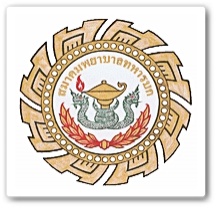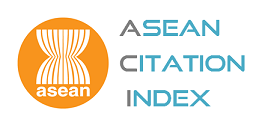ปัจจัยทำนายภาวะแทรกซ้อนในระยะแรกหลังผ่าตัด ในผู้ป่วยที่ได้รับบาดเจ็บรยางค์
คำสำคัญ:
ความรุนแรงของการบาดเจ็บ, ระยะเวลาตั้งแต่ได้รับบาดเจ็บถึงได้รับการผ่าตัด, ค่าดัชนีมวลกาย, ภาวะเปราะบางทางศัลยกรรม, ภาวะแทรกซ้อนในระยะแรกหลังผ่าตัดในผู้ป่วยบาดเจ็บรยางค์บทคัดย่อ
การวิจัยครั้งนี้มีวัตถุประสงค์เพื่อศึกษาอำนาจการทำนายของความรุนแรงของการบาดเจ็บ ระยะเวลาตั้งแต่ได้รับบาดเจ็บ ถึงได้รับการผ่าตัด ค่าดัชนีมวลกายและภาวะเปราะบางทางศัลยกรรมต่อภาวะแทรกซ้อนในระยะแรกหลังผ่าตัดในผู้ป่วยที่ได้รับ บาดเจ็บรยางค์ กลุ่มตัวอย่างเป็นผู้บาดเจ็บรยางค์และ/หรือบาดเจ็บระบบอื่นร่วมด้วยและได้รับการผ่าตัดรยางค์ จำนวน 146 ราย โดยใช้เครื่องมือ แบบประเมินความรุนแรงของการบาดเจ็บ แบบประเมินภาวะเปราะบางในผู้ป่วยศัลยกรรม The 5-Item Modified Frailty Index (mFI-5) และแบบประเมินภาวะแทรกซ้อนหลังผ่าตัดในผู้ป่วยบาดเจ็บทางศัลยกรรม (The Adapted Clavien-Dindo in trauma) วิเคราะห์ข้อมูลโดยใช้สถิติการถดถอยโลจิสติกส์ ผลการศึกษาพบว่าความรุนแรงของการบาดเจ็บ ระยะเวลาตั้งแต่ได้รับบาดเจ็บถึงได้รับการผ่าตัด และภาวะเปราะบางทางศัลยกรรมสามารถร่วมทำนายการเกิดภาวะแทรกซ้อนใน ระยะแรกหลังผ่าตัดในผู้ป่วยที่ได้รับบาดเจ็บรยางค์ได้ร้อยละ 40.5 (Nagelkerke R2 = .405, p < .05) สามารถนำความรู้ไปประยุกต์ ใช้ในการสร้างแนวปฏิบัติในการดูแลผู้ป่วยก่อนและหลังผ่าตัดเพื่อป้องกันการเกิดภาวะแทรกซ้อนในระยะแรกหลังผ่าตัดในผู้ป่วย ที่ได้รับบาดเจ็บรยางค์ และสามารถนำข้อมูลไปใช้วางแผนร่วมกับทีมสหสาขาวิชาชีพในการดูแลผู้ป่วยบาดเจ็บรยางค์ที่ได้รับ การผ่าตัดและป้องกันการเกิดภาวะแทรกซ้อนที่อาจเกิดขึ้นได้
Downloads
References
Mahdian M, Fazel RM, Sehat M, Khosravi G, & Mohammadzadeh M. Epidemiological Profile of Extremity Fractures and Dislocations in Road Traffic. Accidents in Kashan, Iran: a Glance at the Related Disabilities. The Archives of bone and joint surgery. 2017; 5(3): 186-92.
World Health Organization. Physical activit. Geneva: WHO; 2020.
Office of Transport and Traffic Policy and planning. Minutes Ministry of Defense Road Accident Situation. Bangkok: OTP; 2020.
Harris AM, Althausen PL, Kellam J, Bosse MJ, & Castillo R. Complications Following LimbThreatening Lower Extremity Trauma. Journal of Orthopaedic Trauma. 2014; 23(1); 1-6.
Mueck KM, & Kao LS. Patients at High-Risk for Surgical Site Infection. Surgical Infections. 2017; 18(4): 440-6.
Rattanamongkol C, Sindhu S, Toskulkao T, & Iramaneerat C. Factors Related to the Severity of Postoperative Complications in Patients with Primary Gastrointestinal (Stomach, Liver, Bile Duct, Colon, and Rectum) Cancer.Thai Journal of Nursing Council. 2016; 31(3): 97-109. (in Thai)
Roy C. The Roy adaptation model. 3rd ed. Upper Saddle River (NJ): Pearson; 2008.
Khorgami Z, Ewing KL, Mushtaq N, Chow GS, & Howard CA. Predictors of discharge destination in patients with major traumatic injury: Analysis of Oklahoma Trauma Registry. The American Journal of Surgery. 2019; 218(3): 496-500.
Riedel MD, Parke A, Zheng M, Briceno J, Staffa SJ, Miller CP, Kaiser PB, Wu JS, Zurakowski D, & Kwon JY. Correlation of Soft Tissue Swelling and Timing to Surgery With Acute Wound Complications for Operatively Treated Ankle and Other Lower Extremity Fractures. Foot & Ankle International. 2019; 40(5): 526–36.
Rege M, Runner RP, Staley CA, Vu CC, Arora SS, & Schenker ML. Predicts mortality and complications in chronologically young patients with traumatic orthopaedic injuries. Elsevier Ltd. 2018; 49: 2234-8.
Omoke NI, & Nwigwe CG. An analysis of risk factors associated with traumatic extremity amputation stump wound infection in a Nigerian setting. International Orthopaedics. 2012; 36(11): 2327-32.
Baker SP, O’neill B, Haddon W, & Long WB. The Injury Severity Score: a method for Describing patients with multiple injuries and evaluating emergency care. Journal Trauma. 1974; 36(11): 2327-32.
Omoke NI, & Nwigwe CG. An analysis of risk factors associated with traumatic extremity amputation stump wound infection in a Nigerian setting. International Orthopaedics. 2012; 36: 2327–32.
Prommapun B. Interpreting Techniques for Using Parametric and Nonparametric Statistics in Social Sciences Research. Electronic Journal of Open and Distance Innovative Learning (e-JODIL). 2020; 10(1): 1-9.
Velanovich V, Antoine H, Swartz A, Peters D, & Rubinfeld I. Accumulating deficits model of frailty and postoperative mortality and morbidity: its application to a national database. Journal of Surgical Research. 2013; 18(3): 104-10.
Naumann DN, Vincent LE, Pearson N, Beaven A, Smith IM, Smith K, et al. An adapted Clavien-Dindo scoring system in trauma as a clinically meaningful non-mortality endpoint. Journal of Trauma and Acute Care Surgery. 2018; 83(2): 241-8.
Pundee J, Chayaput P, Chanruangvanich W, & Wannatoop T. Predictors of Functional Restoration in Extremity Injury Patients. Journal of Thailand Nursing and Midwifery Council. 2019; 34(4): 48-63. (in Thai)
Pincus D, Ravi B, Wasserstein D, Huang A, Paterson M, Nathens BA, et al. Association Between Wait Time and 30-Day Mortality in Adults Undergoing Hip Fracture Surgery. The Journal of the American Medical Association. 2017; 318(20):1994-2003.
Stavem K, Naumann MG, Sigurdsen U, & Utvag SE. The association of body mass Index with complications and functional outcomes after surgery for closed ankle fractures. Bone Joint Journal. 2017; 99(10): 1389-98.
Pramnoi T, Danaidutsadeekul S, & Chanruangvanich w. Factors Predicting Traumatic Patients Readiness for Hospital Discharge after Extremity Surgery. Journal of Royal Thai Army Nurses. 2022; 23(2): 179-87. (in Thai)
Wilson JM, Holzgrefe RE, Staley CA, Schenker, ML, & Meals CG. Use of a 5-Item Modified Frailty Index for Risk Stratification in Patients Undergoing Surgical Management of Distal Radius Fractures. The journal of Hand Surgery. 2018; 40(8): 701-9.
Downloads
เผยแพร่แล้ว
How to Cite
ฉบับ
บท
License
Copyright (c) 2024 วารสารพยาบาลทหารบก

This work is licensed under a Creative Commons Attribution-NonCommercial-NoDerivatives 4.0 International License.
บทความหรือข้อคิดเห็นใดใดที่ปรากฏในวารสารพยาบาลทหารบกเป็นวรรณกรรมของผู้เขียน ซึ่งบรรณาธิการหรือสมาคมพยาบาลทหารบก ไม่จำเป็นต้องเห็นด้วย
บทความที่ได้รับการตีพิมพ์เป็นลิขสิทธิ์ของวารสารพยาบาลทหารบก
The ideas and opinions expressed in the Journal of The Royal Thai Army Nurses are those of the authors and not necessarily those
of the editor or Royal Thai Army Nurses Association.






